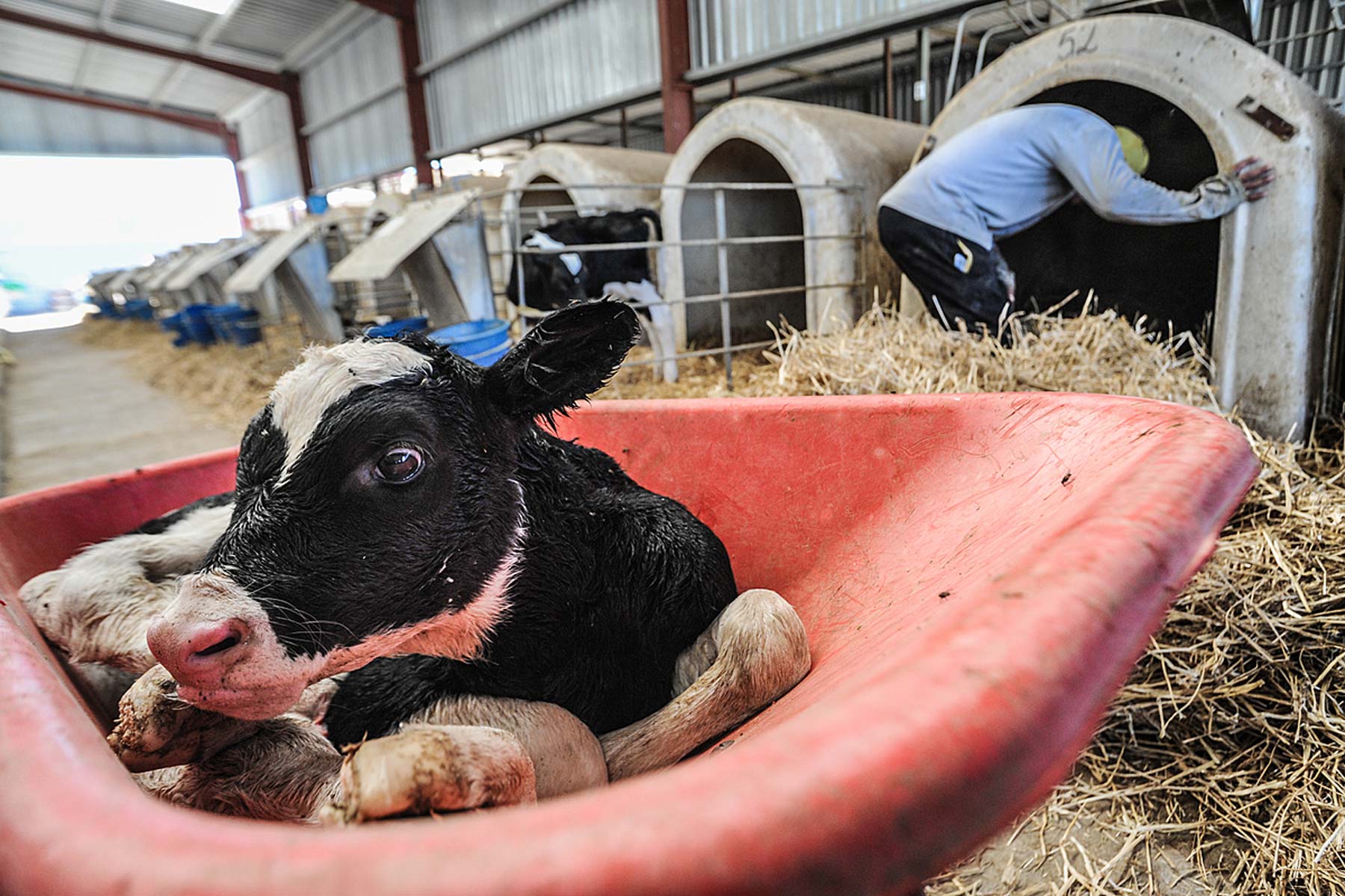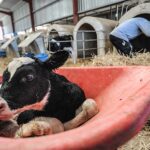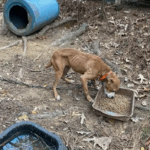In the labyrinth of modern agriculture, the production of veal quietly thrives behind closed doors, ensconced in a veil of obscurity that most consumers remain blissfully unaware of. But what lurks behind this culinary choice? Is the allure of delicate flavors worth the ethical quandaries associated with it? To fully comprehend the implications of veal consumption, one must peer into the intricate practices of the veal industry, where animal welfare often becomes an afterthought.
Veal is derived chiefly from young calves, typically less than six months old, primarily male dairy calves. The very existence of this industry is predicated on dairy production, where the lifespan of these animals is painfully truncated. After being separated from their mothers shortly after birth—a practice that induces distress and an acute sense of loss—the calves are heralded into a stark environment designed for rapid growth and succulence. This separation is the catalyst for a cascade of ethical dilemmas.
The treatment of these young animals varies significantly across different farming practices. In some establishments, veal calves are confined to tiny crates, a stark visual representation of the system’s cruelty. These crates, known as veal pens, inhibit movement to an extreme degree: the calves are unable to turn around or engage in natural behaviors. For these animals, existence becomes a monotonous cycle of confinement, devoid of stimulation and companionship. Loneliness permeates their lives, as social beings by nature, they are isolated from their peers, leading to psychological distress.
This method of confinement is commonly justified by the claim that it enhances the quality of the meat. Proponents assert that restricting movement leads to tender meat; however, such rationalizations fail to acknowledge the profound suffering and deprivation inflicted on these sentient beings. Moreover, this raises an ethical question: does the pursuit of culinary excellence justify such an egregious disregard for life?
Beyond the physical constraints, the feeding practices in the veal industry also warrant scrutiny. Traditionally, veal calves are fed a diet low in iron, a practice designed to produce the pale, “rose-colored” meat that consumers have come to associate with luxury. This diet results in a myriad of deleterious health effects—calves experience anemia, weakness, and respiratory issues as a consequence of nutritional deprivation. To those who argue against the ethical implications of veal consumption, these severely compromised living conditions present a stark contradiction between food choices and humane treatment.
Moreover, the veal industry operates under a shroud of secrecy, often limiting public access to their facilities. This opaqueness fosters a culture of ignorance where consumers remain uninformed, blissfully unaware of the consequences of their dietary choices. For many, veal is simply an indulgence, a culinary delicacy reserved for special occasions. Yet, how many have stopped to consider the lives that have been forfeited, relegated to suffering in silence for mere gastronomic pleasure?
In response to growing concerns regarding animal welfare, certain farms have made moves towards more humane practices, including group housing and pasture-raised options that allow for greater freedom. These farms, however, represent a minority in the sea of industrial practices that perpetuate suffering. It is imperative to distinguish between these progressive operations and the large-scale industrial farms that still dominate the market with their archaic methods.
As awareness around animal welfare issues continues to burgeon, so too does the call for transparency. Consumers are increasingly advocating for humane treatment of all animals raised for food. This shift in attitudes toward animal rights reflects a broader societal transformation, one that seeks to challenge longstanding traditions and practices within the food industry. But is mere awareness enough?
The journey from innocent curiosity to informed conscientiousness often harbors a paradox. The more one learns about the realities of the veal industry, the more one grapples with the moral implications of their choices. Can one continue to enjoy veal without acknowledging the cruelty intertwined with its production? As such, consumers are encouraged to engage in reflexivity—a practice that invites them to scrutinize their food choices deeply.
In recent years, plant-based alternatives have burgeoned in popularity, offering compassionate alternatives to traditional veal. These innovations are not merely trend-based but rather encapsulate a societal shift towards ethical eating. Vegan culinary artists are crafting dishes that replicate the texture and flavor profiles of veal while ensuring that no living creature suffers in the process. The ascendance of these alternatives underscores an evolving perspective on food consumption that places empathy at the forefront.
Ultimately, it is crucial to confront the myriad complexities surrounding veal production. The allure of tenderness and flavor must be weighed against the backdrop of systemic cruelty. It is not merely about the taste but the lives sacrificed on the altar of culinary pleasure. Recognizing the intrinsic value of all animals can ignite a reevaluation of dietary habits and encourage a movement towards a more compassionate food system.
The veil shrouding the veal industry is thin, easily pierced by inquiry and empathy. By lifting this veil, consumers can foster a greater understanding of the ethical ramifications of their choices, revealing a landscape fraught with suffering but also replete with hope for change. It is only within this understanding that a true transformation of conscience can take place—one that champions compassion over cruelty in the ever-evolving dialogue surrounding our food systems.






